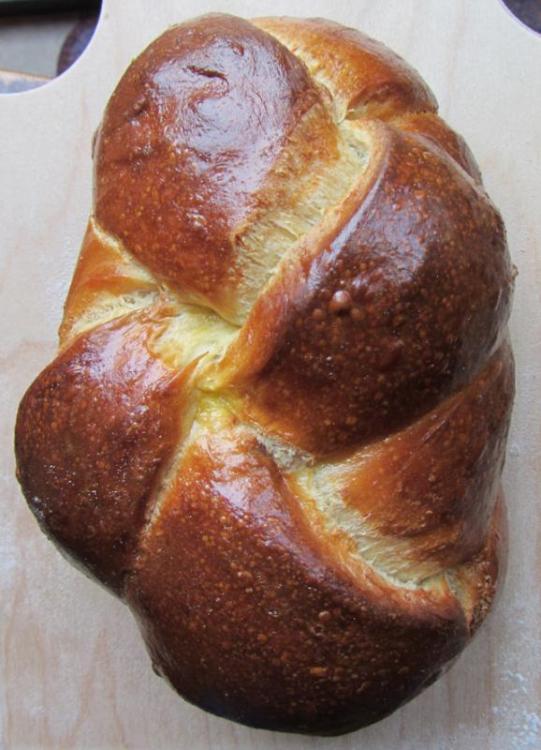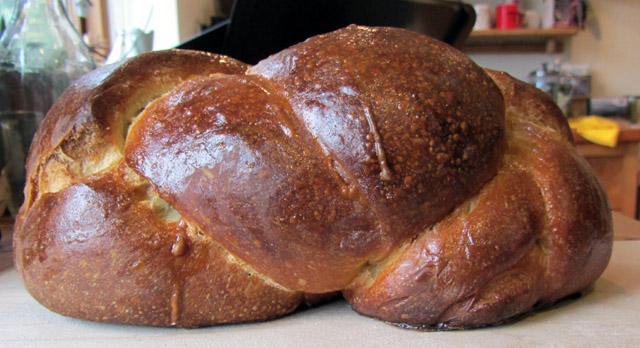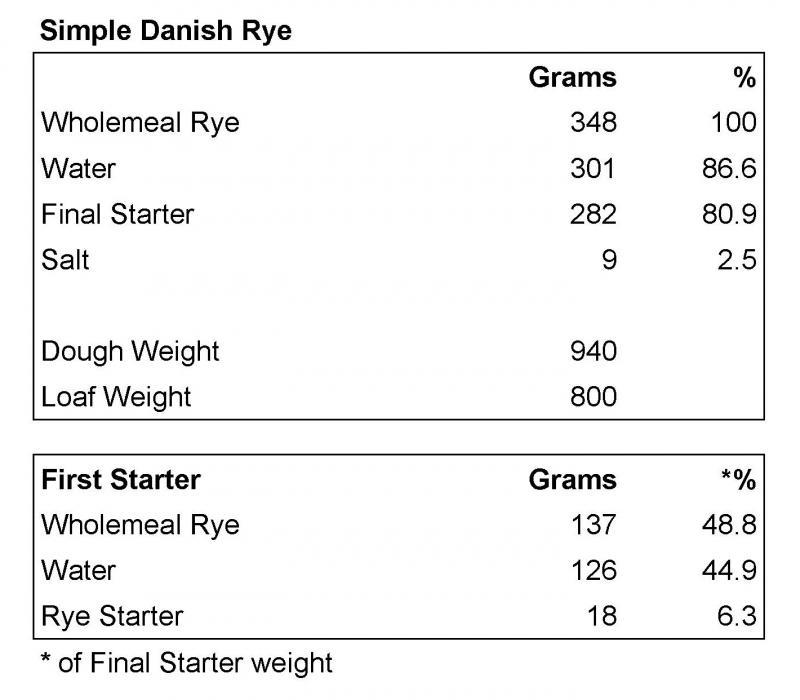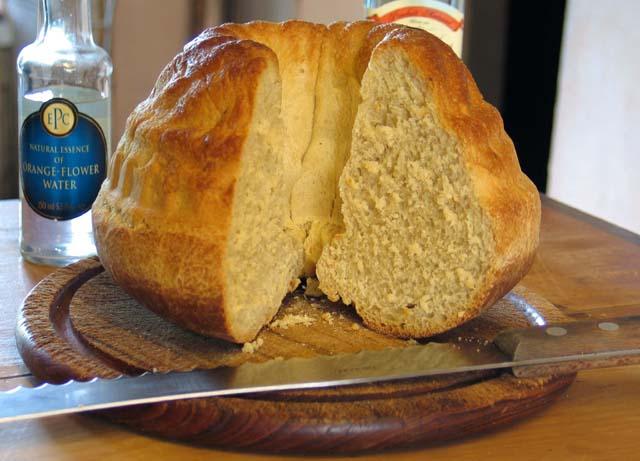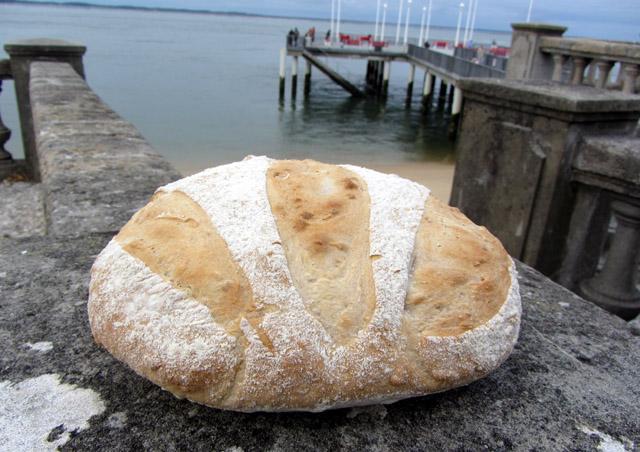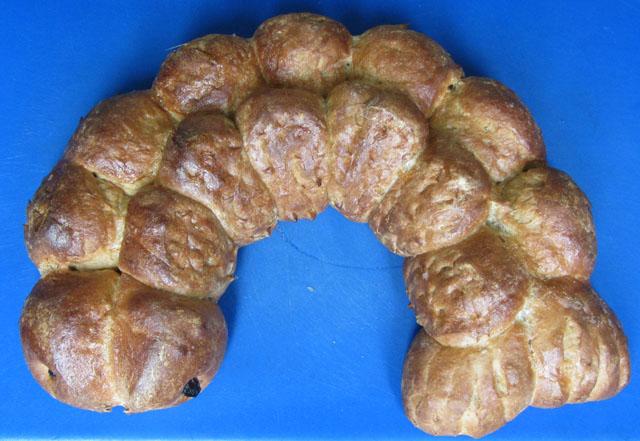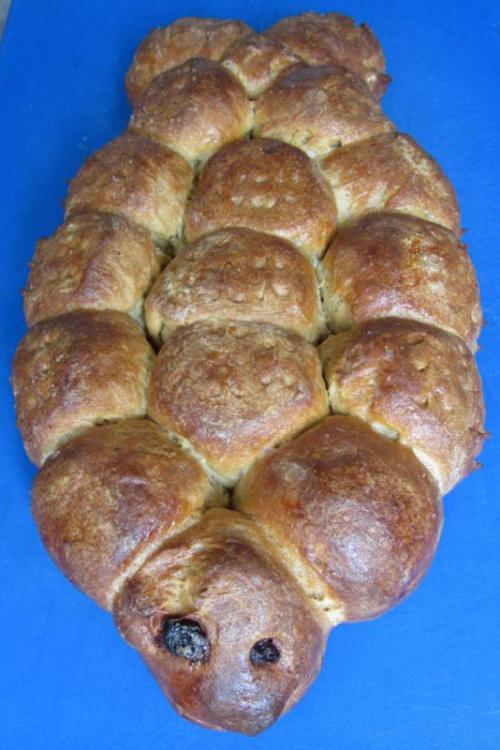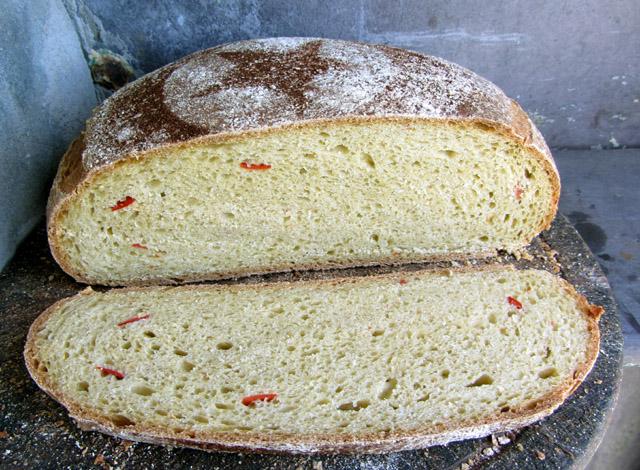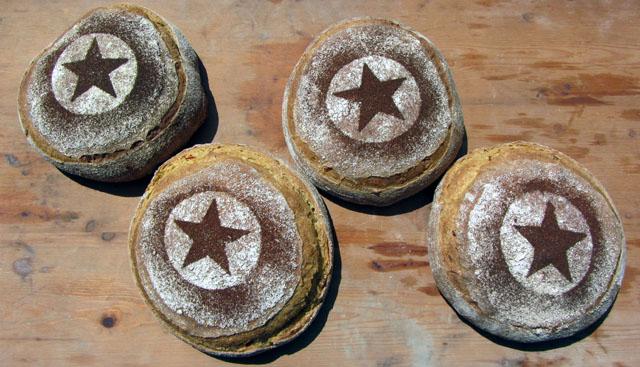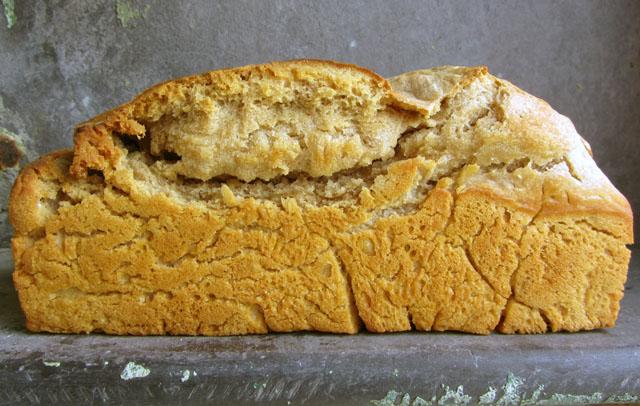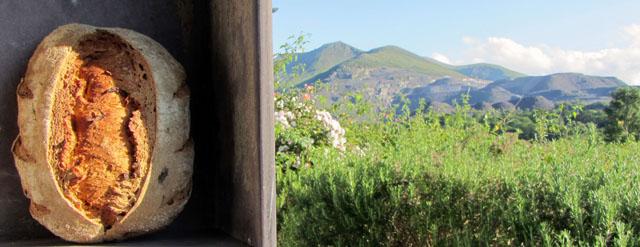
bethesdabakers
participating member-
Posts
239 -
Joined
-
Last visited
-
Quite by chance I, too, was making challah this weekend for the first time in about five years. The inspiration came from a new bread book, "The Hot Bread Kitchen Cookbook" by Jessamyn Waldman Rodriguez. I used my own naturally leavened recipe but I was fascinated by the two strand braid in the book which I had never tried before. I was at a baking weekend in North Wales and unbeknownst to me someone videoed my attempts at a braid. You want to see me looking stupid? At least I was brave enough to unravel it and start again ... Mick
-
Simple Danish Rye – a formula given tome by my friend Nina Holm Jensen in Denmark. You need a rye starter. If you’ve only got a wheat starter refresh some of it with rye a couple of times. I keep my basic starter at 100% hydration (equal weights of starter, water and rye). Your starter needs to be fairly active because of the small amount that goes into the starter for the dough. Mix a starter as shown in the bottom grid of the formula “First Starter”. Use water that’s had the chill taken off it – rye doesn’t like cold. This starter needs 24 hours to mature before it goes into the dough. Mix the dough by hand in a large mixing bowl. Don’t be scared by the wet consistency. There’s no point in kneading it because there’s not much useful gluten in rye. Cover the bowl and let it rest for an hour. Oil a 2 pound bread tin. Have a bowl of water handy. Wet your work surface, wet your hands and scrape the dough out onto the wet surface. Keeping your hands wet, squeeze the dough between them first one way then the other to produce a homogenised mass. Then squeeze the dough to roughly the shape of the tin and drop it in. Press it down and smooth the surface. Cover the tin with oiled cling film so that you can see what’s going on. In my kitchen the dough will prove in about three and a half hours. Keep your eye on the dough and just when you think it will never move it will start to rise. It doesn’t have to come right to the top of the tin, but wait until there’s been a significant movement. Heat your oven to 240C. Bake for 10-15 minutes, turn the oven down to 180C and give it another 40-45 minutes. Turn the oven off. Remove the bread from the tin and return it to the oven with the oven door slightly ajar for about 20 minutes. When the bread is totally cold, wrap in greaseproof, cling film or put in a freezer bag for at least 24 hours before using. Freezes well. You can roughly shape the dough into a boule and prove it in a basket if you are feeling brave but using a tin the first time gives you an idea of how the dough works. Mick
-
If you can wait until tomorrow (UK time) I'll take you through Simple Danish Rye which is probably the 100% rye I bake most frequently. Very easy but a bit weird if you're coming from wheat bread and not used to rye. Mick
-
Personally I think there's a massive difference between using additives and developing your technique. But you're right, it's your choice. Mick
-
My take on this is: I'm all in favour of bakers experimenting. People are always asking, can I do this, is it allowed to do that, when they should be testing it out themselves. But I think that baking has got overcomplicated and people should be experimenting to discover what is really important and what can be discarded. To go beyond making bread from flour, water, salt and natural leavening should require some pretty good arguments because bread made from those few ingredients takes some beating. If you want raisin bread add some raisins, but gelatin? Bakers have been successfully working with high hydration doughs and laminates for decades. So isn't the solution to improve your handling techniques rather than reaching for the jello? Mick
-
Patricia Wells features an olive oil brioche, Pompe a l'Huille, in her 1997 book "At Home in Provence". My black book tells me I converted it into a naturally leavened version in 2004. Contains orange and lemon zest together with orange flower water. She says it is common in Provence and an essential part of the Christmas Eve dinner. She even has a chocolate olive oil brioche. Mick
-
Not the most spectacular of loaves but consider its history. Last Friday I put some starter in a freezer bag and left it overnight. Saturday it went in the hold luggage of a flight from Liverpool to Bordeaux. When we reached Arcachon I just lobbed it in the fridge. On Monday I refreshed it and left it on the counter top. Tuesday I knocked up a dough at 100% hydration using T65 flour and put the dough in the fridge. Yesterday (Thursday) late afternoon. I shaped it and turned on the nasty little microwave/convection oven we have here to what it claims to be 230C. As soon as it came up to temperature a mere 10 minutes later the dough went in the oven. Not really many rules left to break here.
-
Yes, what we need are mature starter owners rather than mature starters. The main thing is to make sure you don't starve them (the starters not the owners) by adding at least the weight of the starter in flour when you refresh. Apart from that do what suits you and what you can get away with. Mick (back in SW France) Mick
-
Yeah, you could do the whole loaves and fishes thing in one: http://forums.egullet.org/topic/149192-the-bread-topic-2014-–/?p=2025564 Mick
-
Well, Shelby, from the sublime to ... The theme for my neighbour's 40th birthday party was Haiwiian. Plenty of crappy recipes on the net for Kings Haiwaiian bread but the basics (pineapple juice and vanilla) were easy to substitute in a basic poor man's brioche. Silly baking can be fun. Mick
-
Apart from a brief Danish Pastry phase after he retired my Dads only brush with gastronomy was bombing the Le Creuset factory in WWII. He was a navigator/gunner flying Lancasters. I hope his navigation skills were better than his baking. Mick
-
Rotuts - your last bread had a bluish tinge from the buckwheat. This has a barely visible green tinge from the tomatillos and the cilantro. Texas Tomatillo Bread with Chiles Serrano - exclusive to Bethesda, North Wales. Does that make it one of those iconic regional breads? Do you think the guys from Modernist Cuisine might be interested? Mick
-
Rotuts - I guess that's using commercial yeast as you are baking in a bread machine. But even if you were baking sourdough I think you get the best flavour development from blending different flours rather than assuming the flavour will come from the starter. This ugly beast is the remains of an 80% hydration white sourdough that I mixed last Friday and baked today (Wednesday). I had a student doing a Sourdough Intro Course over the weekend and mixed it so we could make pizzas on Sunday. By today the gluten in what was left had pretty much totally broken down. It was extremely difficult to handle even with a lot of flour and just fell apart. But we managed to get it in a tin, gave it a couple of hours prove and wacked it in the oven. I was amazed that it rose at all (the wholeof the domed top). In this case I think the whole flavour will come from the fermentation and not the flour! Not a bread to plan to make. Mick
-
Hi Elsie I dragged that book back from France last year and was hugely disappointed when I looked at the detail even if it does have the mighty Eric Kayser's name on the cover. I always think his books play to the (very) amateur rather than trying to push the home-baker's skills. But my question would be, why does he include commercial yeast with the starter? It's totally unnecessary. Smithy - that is a seriously brave thing to do with an 80% dough. I think that looks great. I looked up "crankshaft" in my French dictionary - it's vilebrequin. Call it that and add a bit of French kudos. As far as I remember pain a l'ancienne is a modern bread deliberately created to reflect how bread used to be in response to commercial production methods, Glad you are enjoying the blog - I can use my own voice there without being reminded that I didn't attend the School of Good Manners. Mick
-
I've sorted out a couple of bread formulas for you, a High Hydration Wholemeal loaf and a Dutch Potato Bread loaf with starter at 125%. I hope no one is confused about the difference - a high hydration dough is very wet and so needs special handling; a dough with a high percentage of starter needn't be very wet because there might only be a small percentage of water in the dough. I'm happy to discuss the breads here but the formulas are on my blog , thepartisanbaker.com. They are going to end up in a book sometime and I want to have some control over them and to be able to remove them from the net at a later date. If you go to the blog and position the cursor over "Bread" in the top menu a drop-down menu will appear where you will find the two formulas together with a few others. Tomato bread in my porch on a blazing Bethesda evening. Mck





